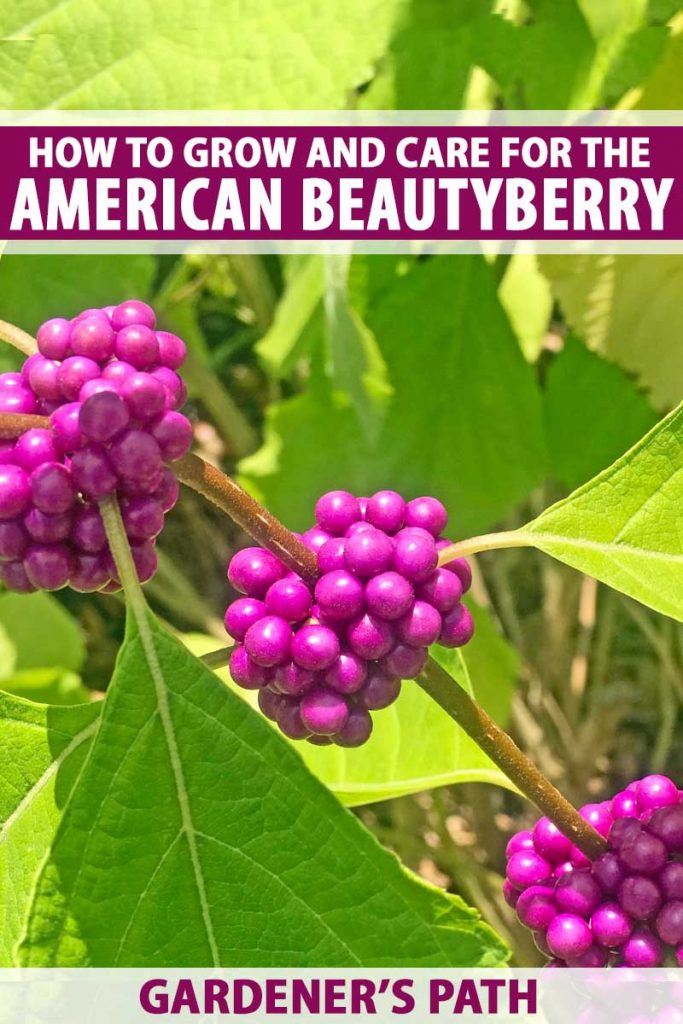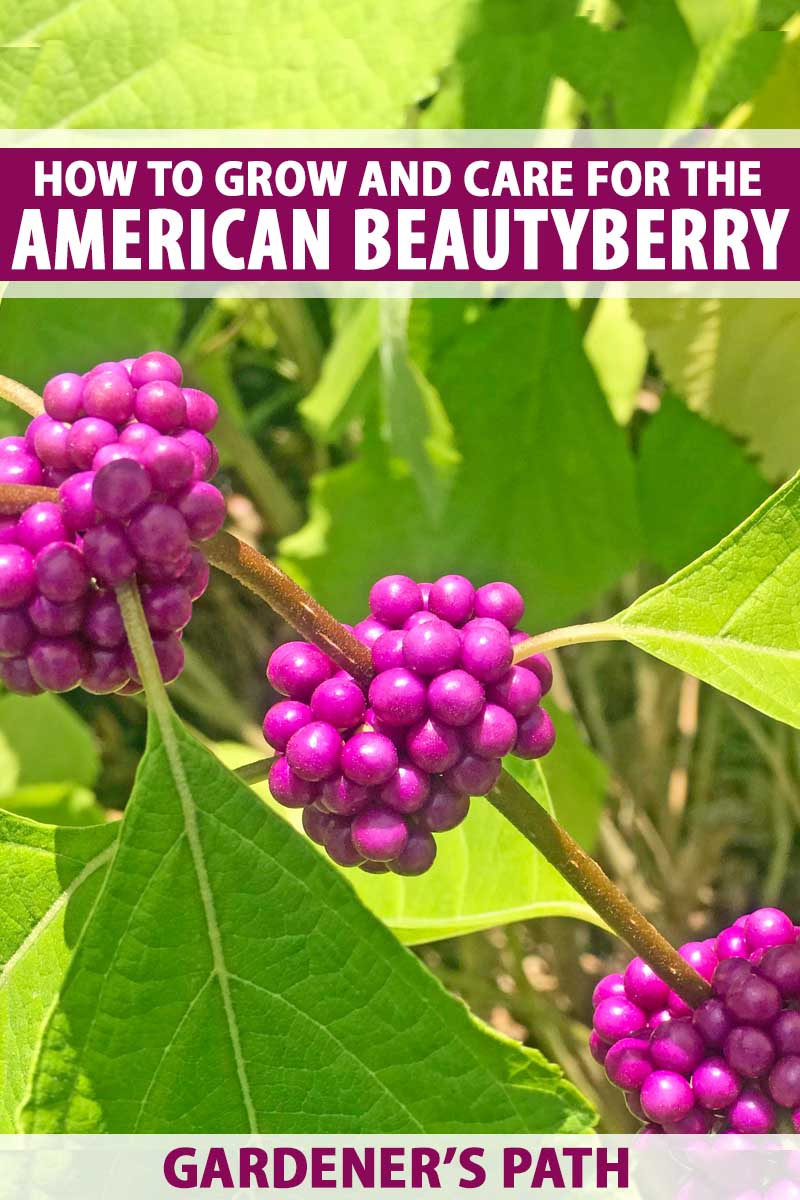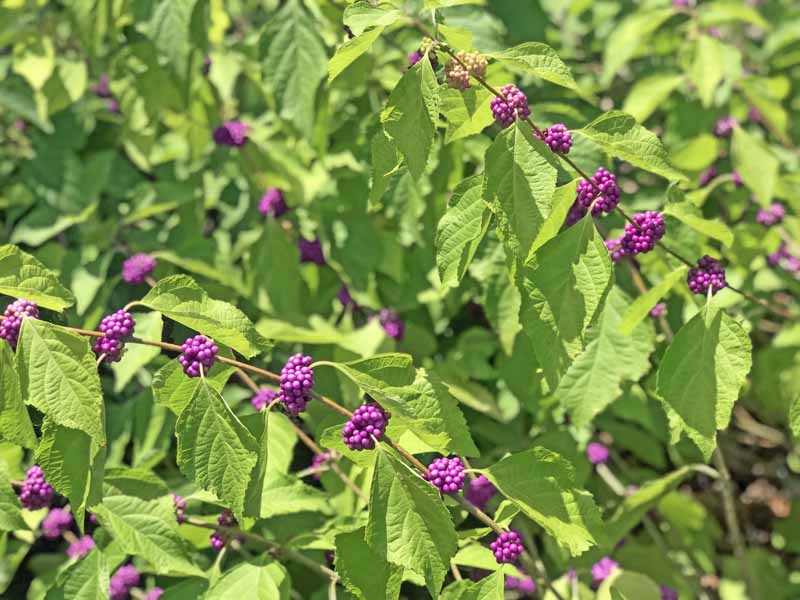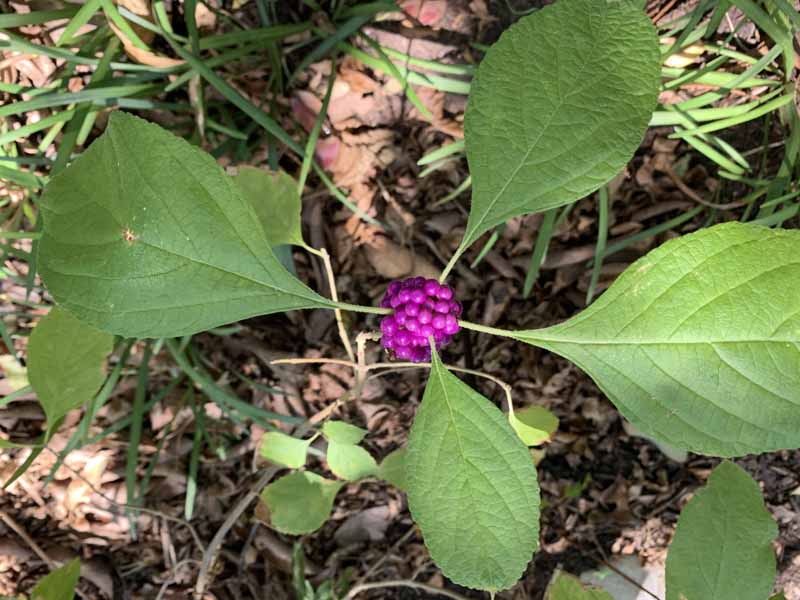The emotive lexicon is well deserved. This large, deciduous shrub, native to the southeastern United States, is truly beautiful. With long, arching branches bearing large, light green leaves, and clusters of little flowers that morph into green and then brilliant purple berries containing three to four seeds each. We link to vendors to help you find relevant products. If you buy from one of our links, we may earn a commission. Armadillos, foxes, opossum, squirrels, and raccoons like the berries, too. When desperately hungry, deer will eat the leaves of the plant and they’ll eat the berries after they’ve dropped. Humans can eat the berries, too; they’re said to have a medicinal flavor when eaten raw. They can also be made into jam. Some people have reported upset stomach after eating the berries, however, so it might be best to try just a few before eating a big ol’ slice of beautyberry pie. If animals and people don’t eat them all, the berries will persist well into winter, even after the leaves have all fallen. American beautyberry is appreciated for its fall interest – bright yellow leaves and, of course, the lovely bb-sized purple berries.
Cultivation and History
Native American tribes used the roots, leaves, and branches to treat malarial fevers and rheumatism. The roots were used to treat dizziness, stomachaches and dysentery. Roots and berries were boiled and made into a drink to treat colic. In the early 1900s, farmers crushed the leaves and placed them under the harnesses of horses to repel mosquitoes. They also rubbed the crushed leaves on their skin to repel mosquitoes and other biting bugs.
Propagation
You can propagate this shrub from seed or by taking softwood stem cuttings.
From Seed
If growing from seed, soak the seeds in clean, cool water for 24 hours. If you want to start seeds indoors, sow 1/16-inch deep in small pots or seedling trays filled with seed-starter potting mix. Place trays or pots in a warm, sunny area. Keep the soil lightly moist via a spray-bottle mister until the seedlings are transplant size, about three months after sowing. This plant also liberally reseeds itself. For direct sowing, you can sow seeds in fall, before first frost or in spring, after all danger of frost has passed.
From Cuttings
You can propagate beautyberry from softwood cuttings in spring. Softwood is a stem that is not brand new nor old and woody. Cut four- to six-inch stems from a healthy plant. Fill small pots with an all-purpose soil mix and insert and remove a pencil to create a hole for the cutting. Remove the lower leaves from your cutting, dip the cleanly cut end into rooting hormone and place in the hole. Create a mini greenhouse by placing a plastic dome or clear plastic bag over the pot or pots. Put it in bright, indirect light. Read more about propagation techniques for this shrub here.
How to Grow
American beautyberry likes rich, organic soil, but it will tolerate less-delicious soils, as long as they are well-draining. Depending where you live and plant it, it may take full sun, though it will need lots of water. Here in Texas, it’s often used as an understory shrub, with dappled shade. If you’re transplanting from a nursery container, dig a hole the the same depth as the root ball and a little wider. Place the root ball in the hole and backfill with native soil. Water in well.
Growing Tips
Plant in rich soil if you can, but don’t sweat it if you can’t.Water well when young.No need to fertilize.
Pruning and Maintenance
In warmer areas, this shrub may be pruned back in late winter to about two feet less than the desired size. Beautyberry is drought-tolerant once established, though it performs better with more hydration. And as we mentioned above, if you plant it in full sun, you’ll need to really dump the water on it. This plant doesn’t require fertilization.
Best Uses
This shrub looks spectacular in mass plantings, and it can be used in reclamation work and for erosion control. American Beautyberry Bush Live Plant You can find live shrubs in three-gallon containers available from Fast Growing Trees.
Managing Pests and Diseases
The only known beautyberry pests are the animals that enjoy the plant’s berries. You may see minor leaf spots (Atractilina callicarpae) or black mold (Meliola cookeana), which can be treated with a fungicide. It also makes a nice back-of-the-border plant. Sun or shade tolerate, not picky about soil, drought-tolerant – it’s a low-maintenance addition to the landscape. Do you have American beautyberry in your garden? Tell us about it in the comments section below. And to find more ornamental woody shrub choices for your backyard, be sure check out some of these guides:
19 Fragrant Flower and Shrub Favorites For Your Garden13 of the Best Evergreen Shrubs for Your GardenThe Best 15 Woody Shrubs for Fall Color




